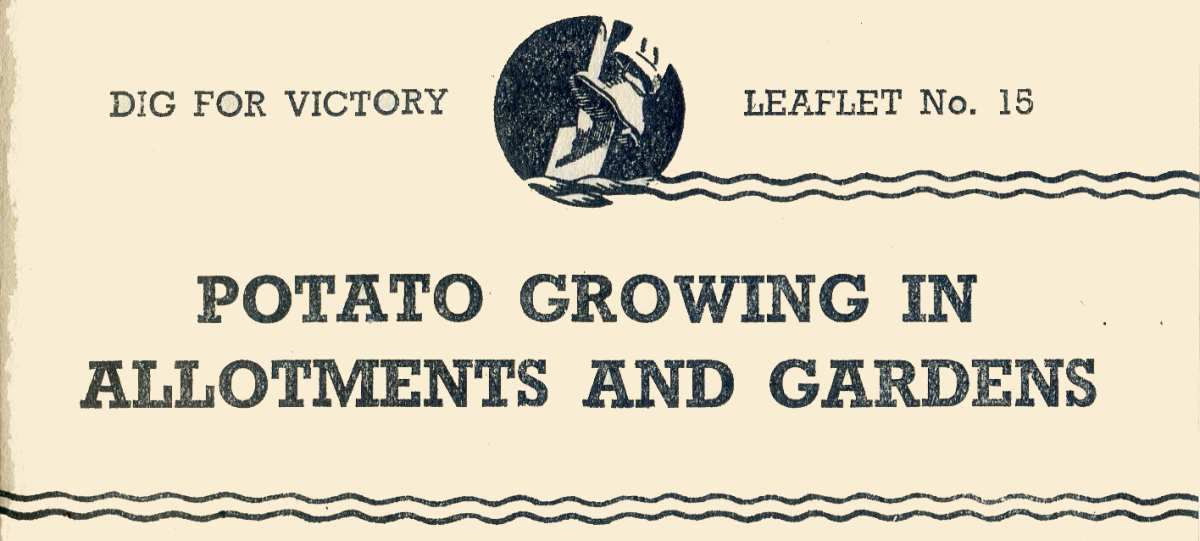 POTATO GROWING IN ALLOTMENTS AND GARDENS
POTATO GROWING IN ALLOTMENTS AND GARDENS
DIG FOR VICTORY LEAFLET No. 15 (Page 2 of 4)
Selection and Preparation of Seed
Tubers for planting should be procured each year from a district known to produce good ” seed “. It is unwise to save for seed, potatoes grown in allotments and gardens. Potato crops on an allotment usually become infected with virus disease.
Seed potatoes should be handled carefully. If the skin is damaged, even if only slightly, the tubers are liable to go rotten during sprouting. Seed potatoes should be examined periodically, and those showing any sign of disease should be destroyed.
To reduce the risk of eelworm infection, all soil clinging to seed potatoes should be washed off with cold water, particular care being taken to remove all soil near the sprouts. Injury to the sprouts should, of course, be avoided.
As soon as seed potatoes are received, they should, if possible, be placed in shallow boxes with the crown or rose end upwards. The boxes should then be placed in a cool shed where light is freely admitted and frost excluded.
In severe weather, the seed should be covered with straw or other protective material against frost damage, but the covering should be removed immediately there is no danger from frost. Potatoes sprouted in this way produce the short, sturdy shoots that make for earliness and high yield.
Two strong shoots on a tuber are sufficient unless it is intended to cut them, in which event there should be sufficient shoots for two to each cut portion. All weak shoots should be removed, and sets that produce long weak shoots under the conditions described above should be rejected altogether.
Roughly 56 Ib. of seed should suffice for about 5 rods, but the quantity will vary according to size of seed and planting distances.
Varieties fall into two groups— those susceptible to and those immune from Wart Disease (see Advisory Leaflet No. 274). The Regulations made to prevent the spread of this disease require all potatoes planted or sold for planting in England or Wales to be officially certified, but there has been some relaxation of this requirement to meet present emergency conditions.
Owners are nevertheless strongly advised in their own interests to give preference, when purchasing seed potatoes, to stocks that have been officially certified or are otherwise known to be satisfactory.
On land on which Wart Disease has occurred at any time, only immune varieties may be planted.
Potato wart disease is no longer the major problem it was in the 1940s due to resistant varieties and controls over planting susceptible varieties in affected areas. This publication from DEFRA refers.


